Introduction, Setup, Benchmarks
2009 will surely go down as the year that the Solid State Disk (SSD) rose to prominence. Performance enthusiasts around the globe have been rubbing their hands (and emptying their wallets) with glee at superior seek times, skyrocketing read & write performance and cool, silent operating characteristics.
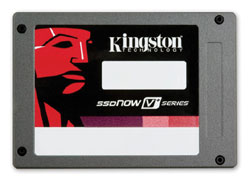
Image courtesy of Kingston
Kingston's latest foray in this popular segment is the SSDNow V+. This is an MLC-based drive available in 64GB, 128GB, and 256GB sizes, with the 64GB unit being tested in this article. Kingston claims a sequential read throughput of 220MB/s, a sequential write throughput of 140MB/sec, 6300 read IOPS for a 4K file size, and 84 write IOPS at the same size.
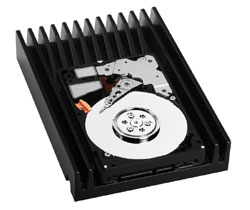
Image courtesy of Western Digital
Western Digital has been the enthusiast's choice in recent years with their Raptor line of traditional spinning platter hard disk drives (HDD). The most recent model, the 300GB VelociRaptor, will be tested against Kingston's SSD offering. This 10,000 RPM drive features 16MB of cache and a 2.5" form factor, seated inside a 3.5" caddy that doubles as a heat sink. The only performance numbers Western Digital specifies are seek times under 5ms.
The 64GB SSDNow V+ is currently priced at around AU$280, putting it about 20 bucks cheaper than the AU$300, 300GB VelociRaptor. The question to be posed, therefore, is 'why wouldn't you just pay 20 bucks more and get 4.5 times the capacity?'

HDTune 3.50:
These HDTune results are averages of the 5 access times reported over the varying file sizes used in the test. This ranges from 512 bytes to 1MB, and also included a random file size.
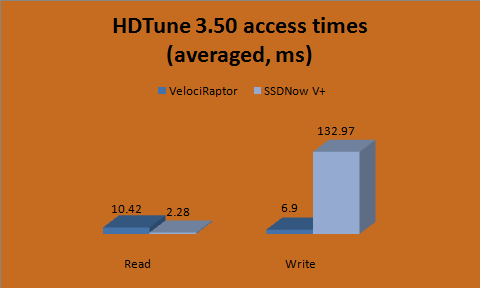
Probably not quite the expected result here, with regard to the write access times. This can be explained by the following screenshots of the respective results.
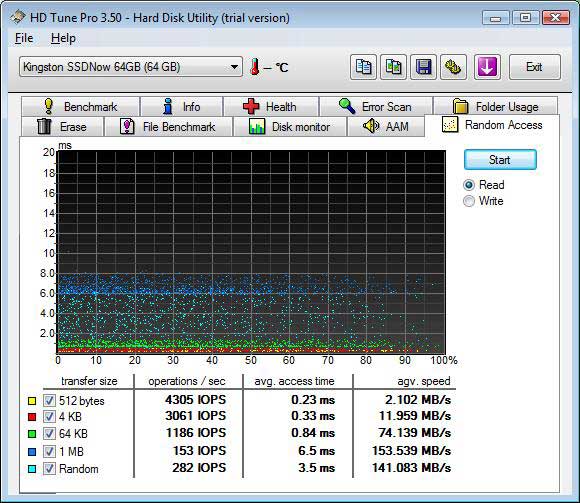 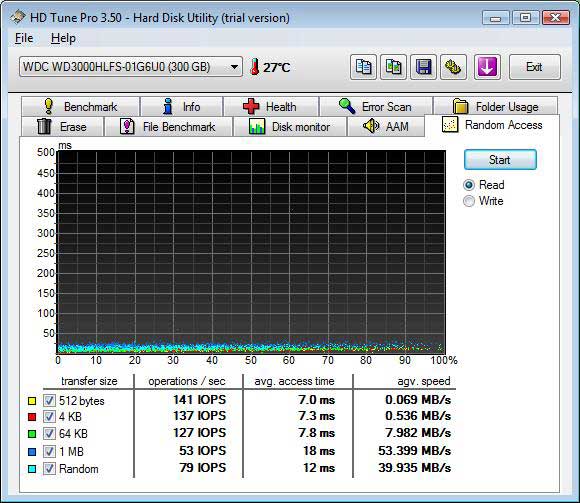
The read results are quite straightforward and the SSD has a clear advantage. With small file sizes, traditional spinning platter hard disks just cannot compete, although it's noteworthy that as the file size goes up, the VelociRaptor's performance doesn't degrade as quickly as the SSD. If completely linear gains could be achieved from simply ramping up the RPM of this VelociRaptor, it would need to spin at around 150,000 RPM to compete at the smallest block size!
Western Digital's recent purchase of SiliconSystems is indicative of where the company (and indeed just about everyone) thinks the market is headed in the long term.
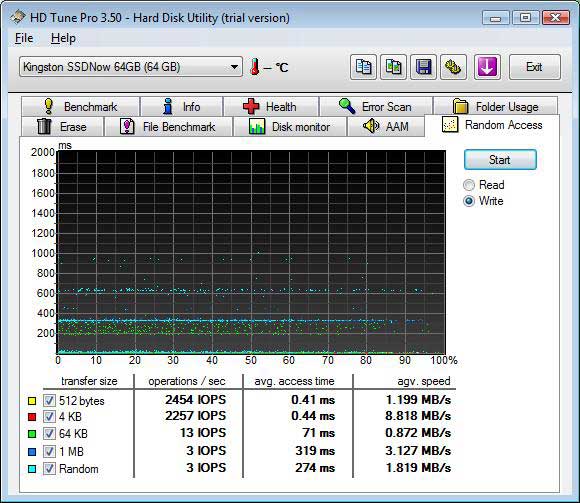 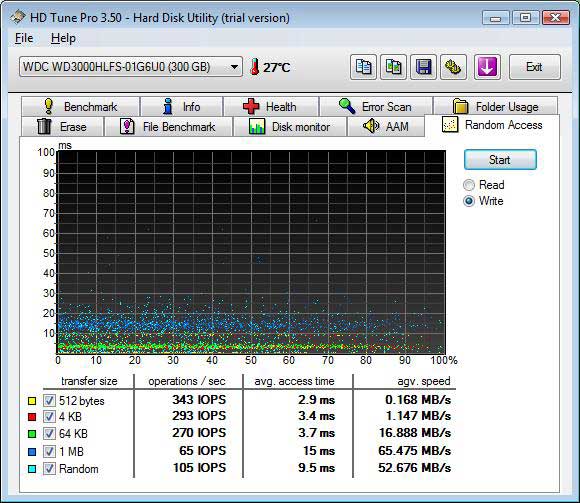
In write tests up to 4KB block sizes, the SSD is again emerging as a strong winner, although the margin has more than halved in comparison to the read times. Larger than 4KB, the situation reverses dramatically, and the commanding performance lead flips back to the VelociRaptor. If the previous (and admittedly rather ridiculous) RPM analogy were applied here, at the 1MB block size, the VelociRaptor could spin as low as 2000RPM and still come out on top.
|


